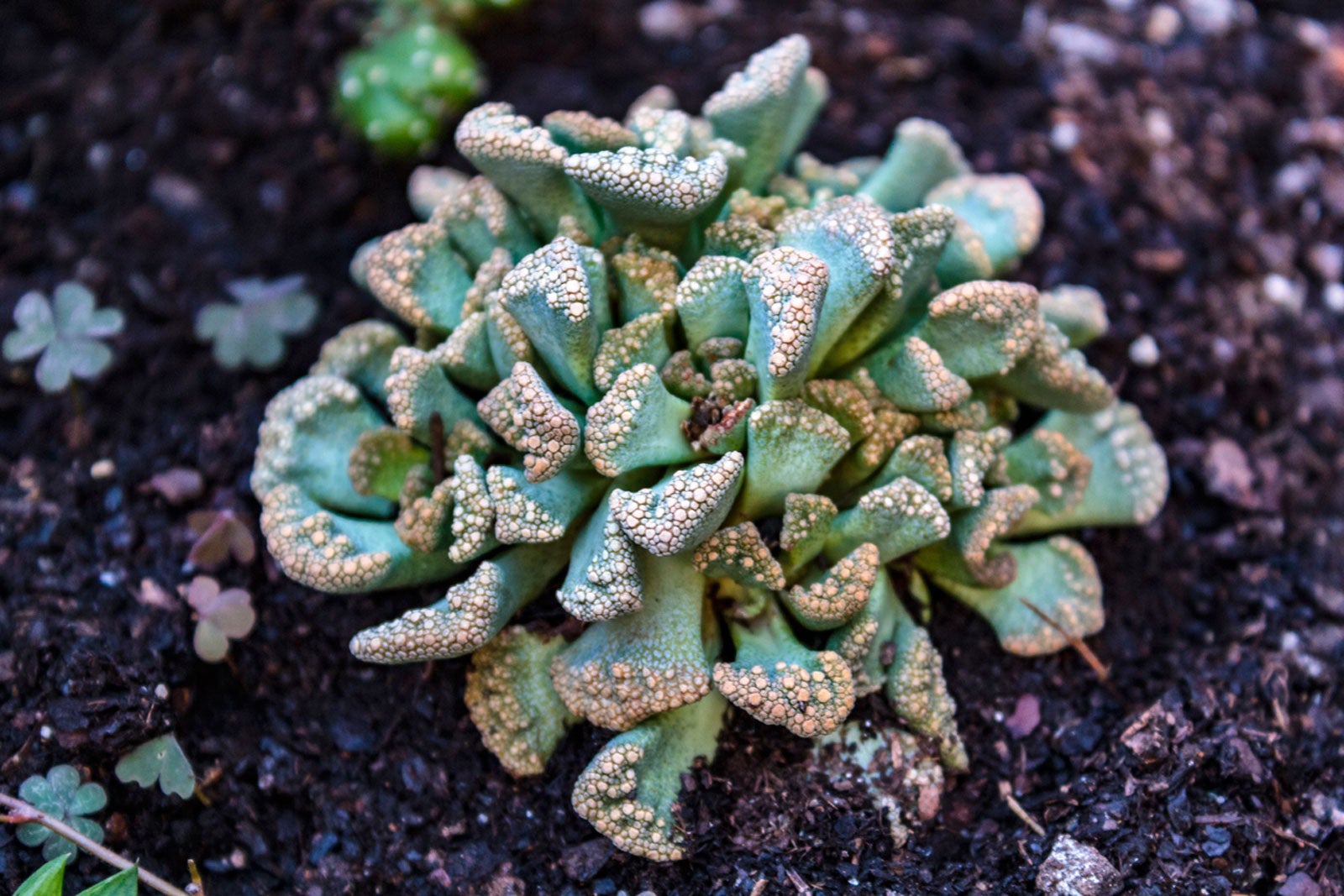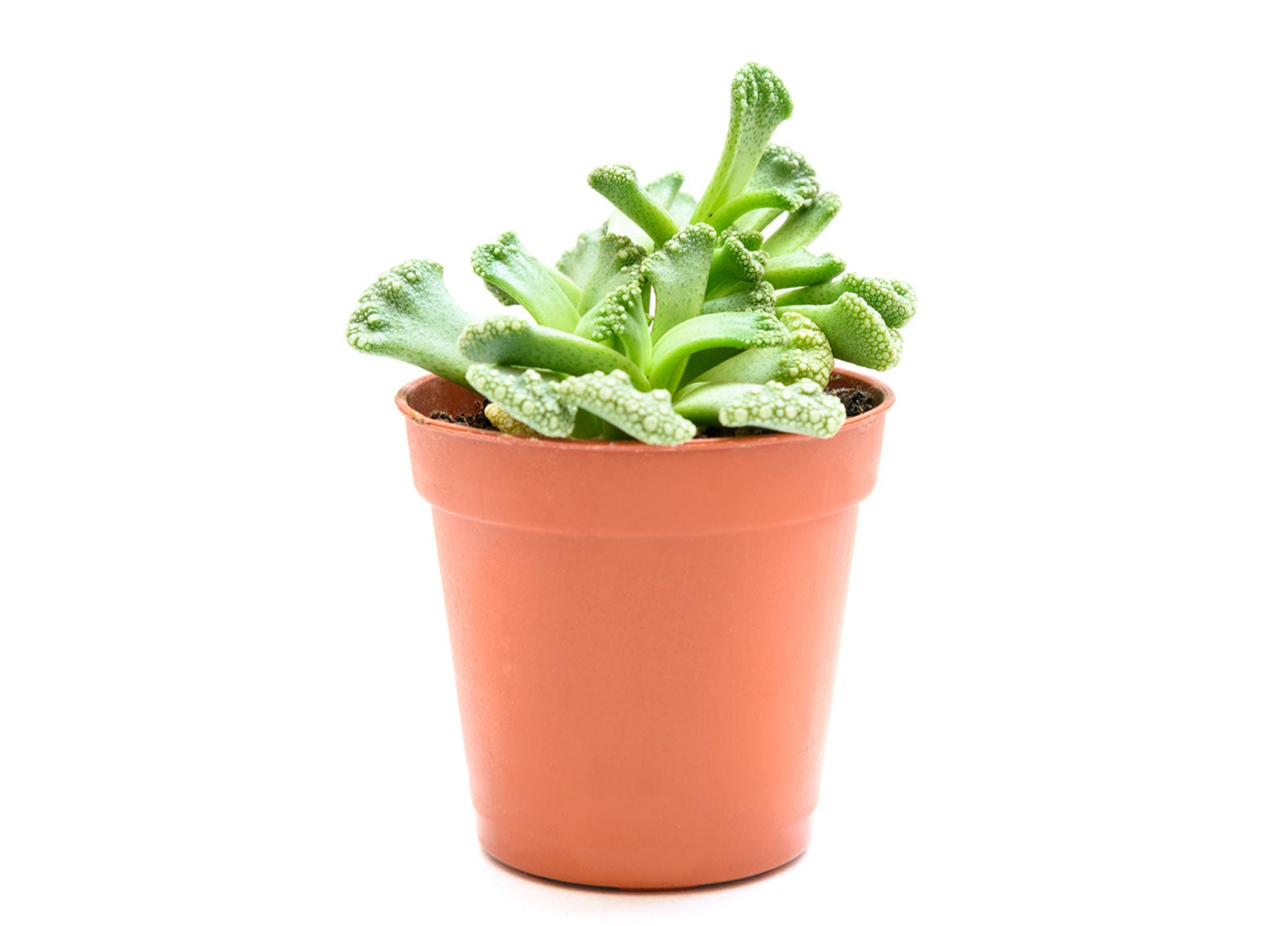Titanopsis Care Guide: How To Grow A Concrete Leaf Plant


Concrete leaf plants are fascinating little specimens that are easy to care for and sure to get people talking. As living stone plants, these succulents have an adaptive camouflage pattern that helps them blend into rocky outcroppings. And in your home or succulent garden, it will help add beauty and interest to your life. Keep reading to learn more about how to grow a concrete leaf plant.
Concrete Leaf Succulent Info
The concrete leaf plant (Titanopsis calcarea) is a succulent native to the Western Cape province of South Africa. It grows in a rosette pattern of gray to blue-green leaves. The tips of the leaves are covered in a rough, dense, bumpy pattern that ranges in color from white to red to blue, depending upon the variety. The result is a plant that looks remarkably stone-like in appearance. In fact, its name, calcarea, means “limestone-like”. This is likely no accident, as the concrete leaf succulent grows naturally in the crevices of limestone outcrops. Its stony appearance is almost definitely a defensive adaptation meant to trick predators into mistaking it for its surroundings. In late autumn and winter, the plant produces striking yellow, circular flowers. While they detract a bit from the camouflage, they are really beautiful.
Titanopsis Concrete Leaf Plant Care
Growing concrete leaf plants is relatively easy, as long as you know what you’re doing. In the growing period of late fall and early spring, they do well with moderate watering. The rest of the year they can tolerate a decent amount of drought. Very well-draining, sandy soil is a must. Sources vary on the plants’ cold hardiness, with some saying they can tolerate temperatures as low as -20 F. (-29 C.), but others claiming only 25 F. (-4 C.). The plants are much more likely to survive a cold winter if their soil is kept completely dry. Wet winters will do them in. They like some shade in summer and full sun in the other seasons. If they receive too little light, their color will steer toward green and the stony effect will be lost somewhat.
Gardening tips, videos, info and more delivered right to your inbox!
Sign up for the Gardening Know How newsletter today and receive a free copy of our e-book "How to Grow Delicious Tomatoes".

The only child of a horticulturist and an English teacher, Liz Baessler was destined to become a gardening editor. She has been with Gardening Know how since 2015, and a Senior Editor since 2020. She holds a BA in English from Brandeis University and an MA in English from the University of Geneva, Switzerland. After years of gardening in containers and community garden plots, she finally has a backyard of her own, which she is systematically filling with vegetables and flowers.
-
 Moody Blooms For Spring: 8 Types Of Black Flowers To Add Drama To Spring Displays
Moody Blooms For Spring: 8 Types Of Black Flowers To Add Drama To Spring DisplaysFrom midnight burgundies to inky violets, several types of black flowers can enrich and embolden a spring display. Try these brooding bloomers for a moody garden
By Tonya Barnett
-
 Can Snake Plants Live Outside? Everything You Need To Know For Snake Plants Al Fresco
Can Snake Plants Live Outside? Everything You Need To Know For Snake Plants Al FrescoSnake plants can live outside given the right conditions, but be careful that they don't take over! Learn the best way to use snake plants in your landscape.
By Mary Ellen Ellis
